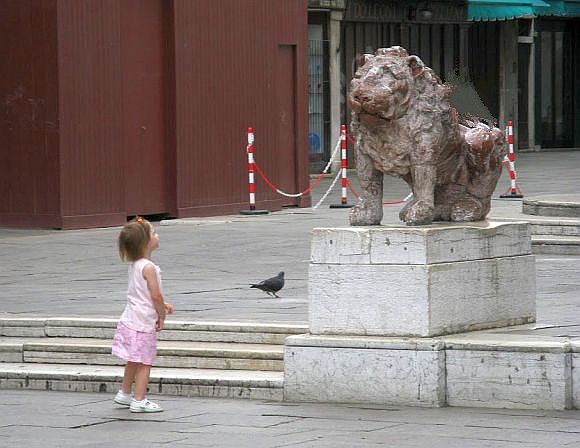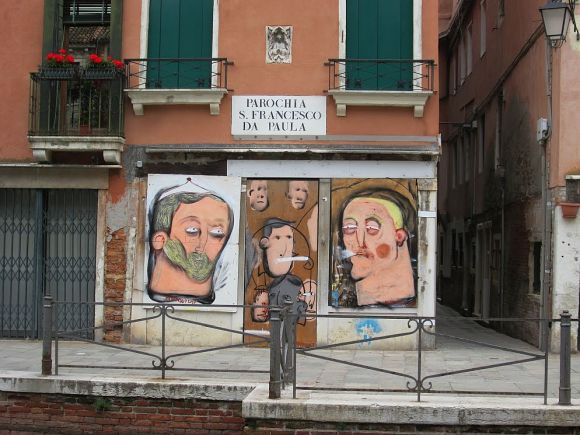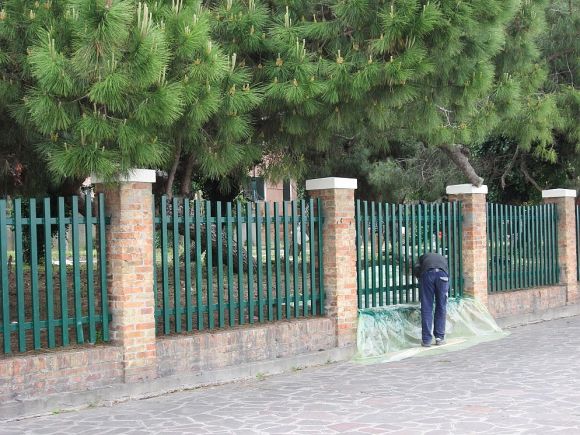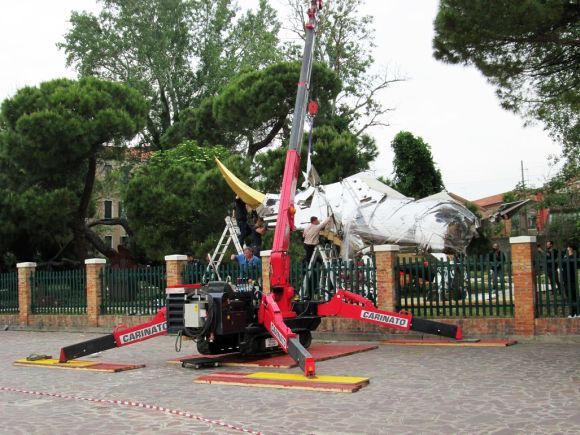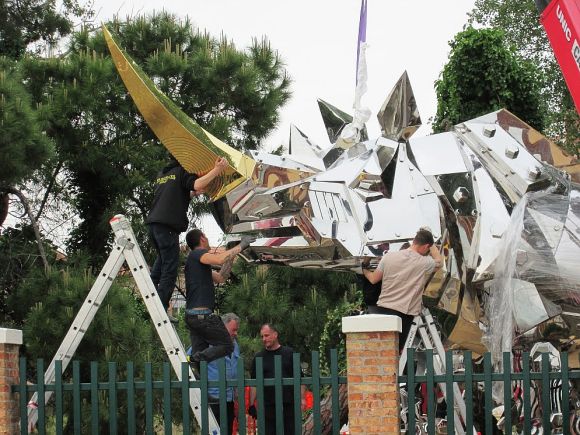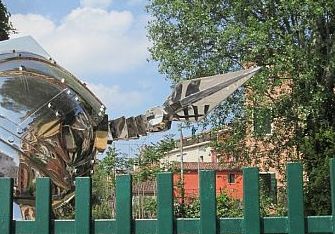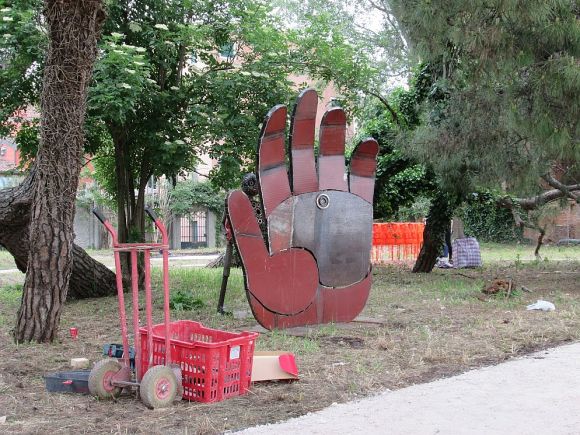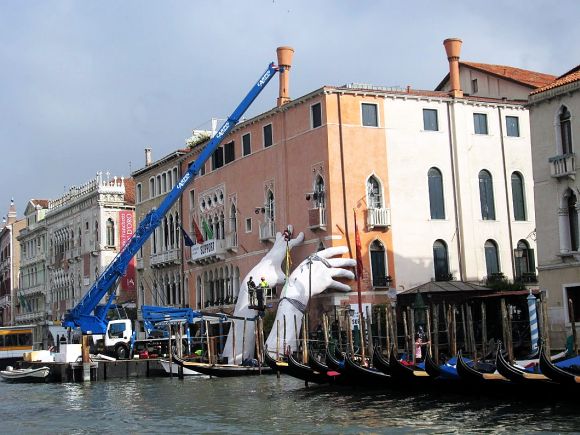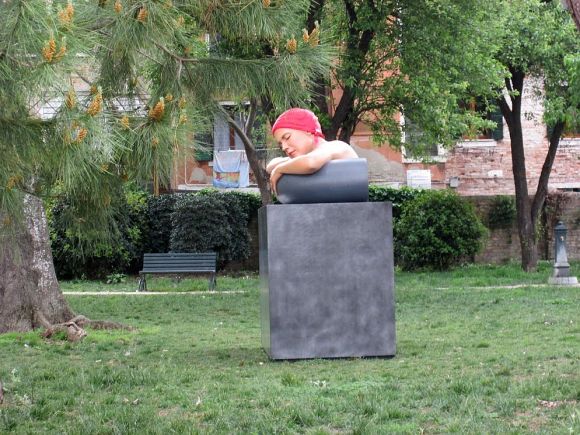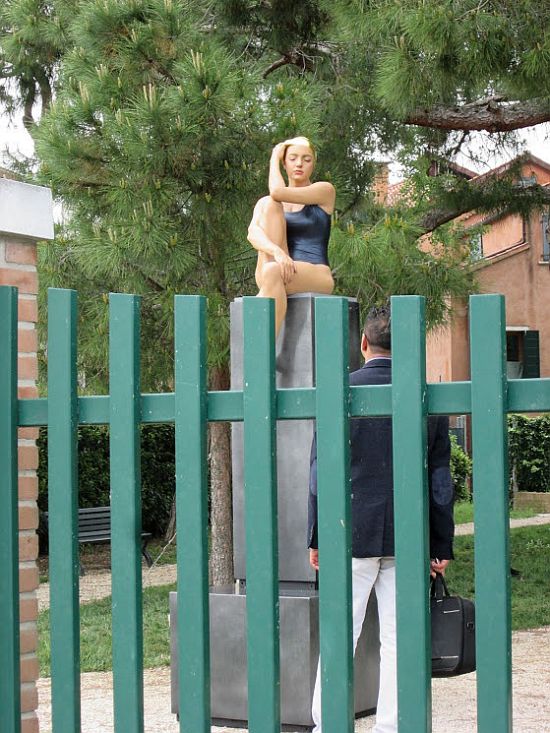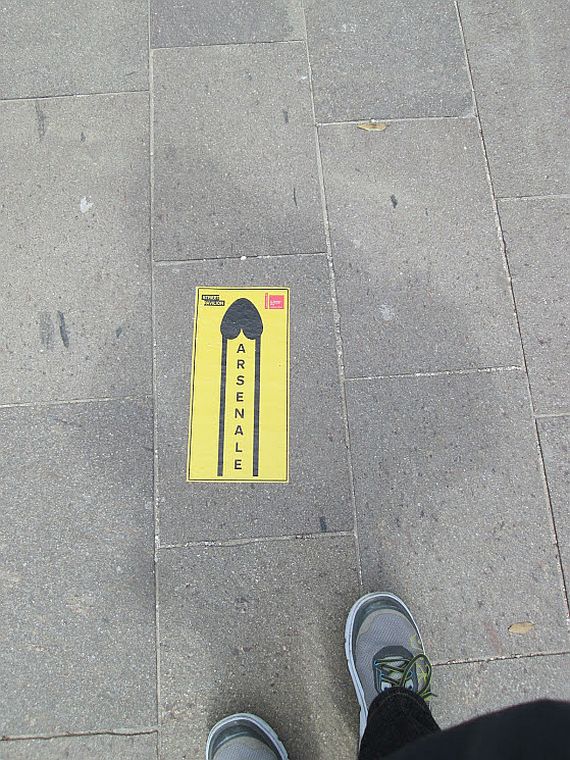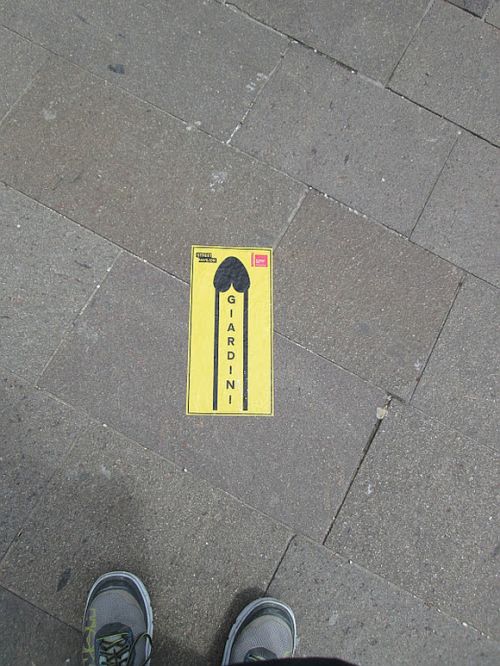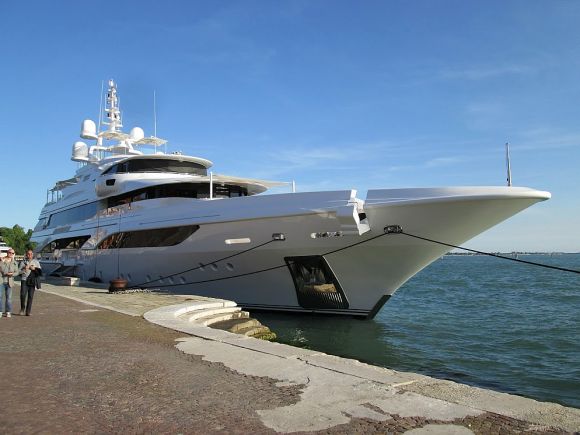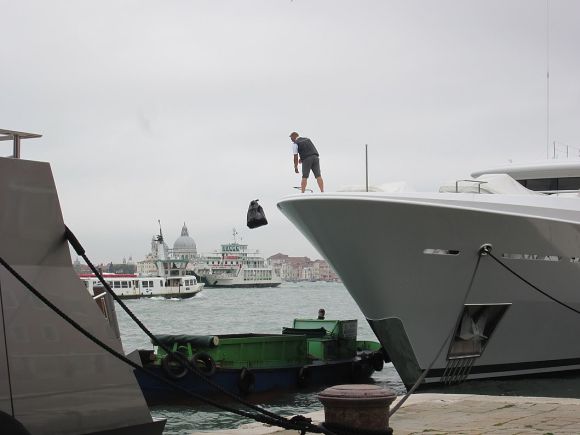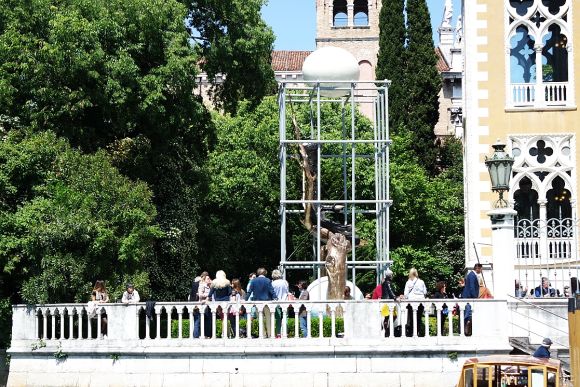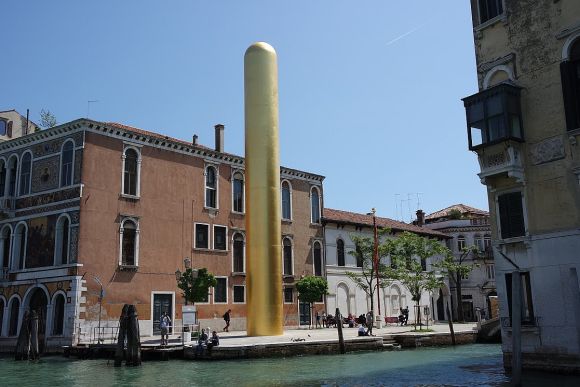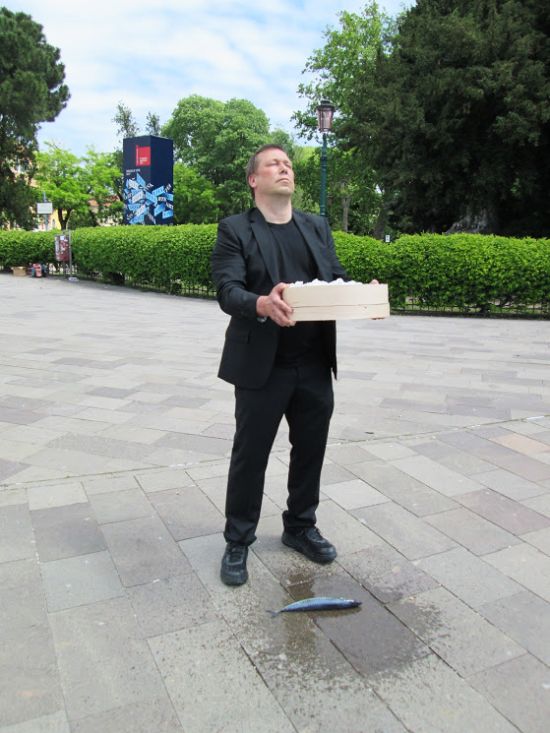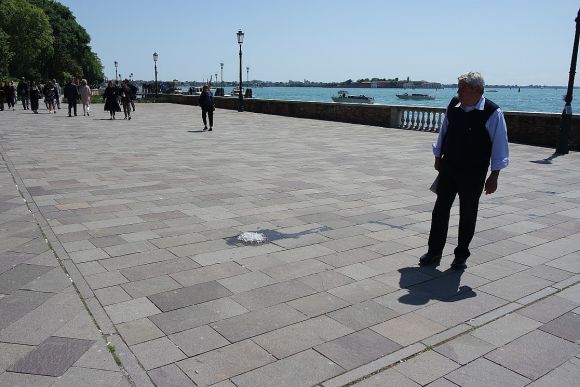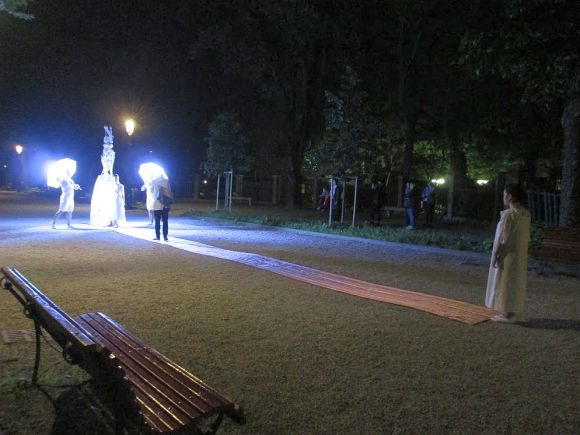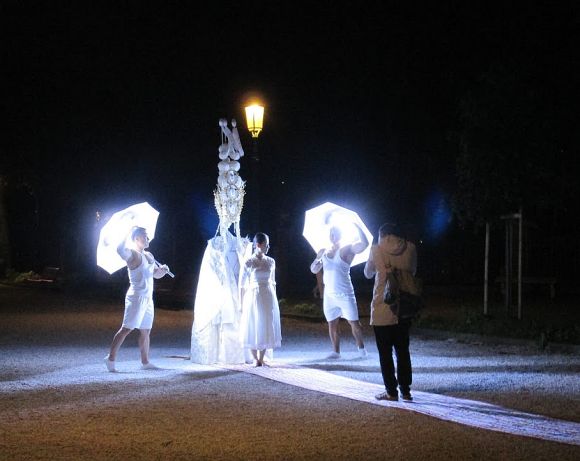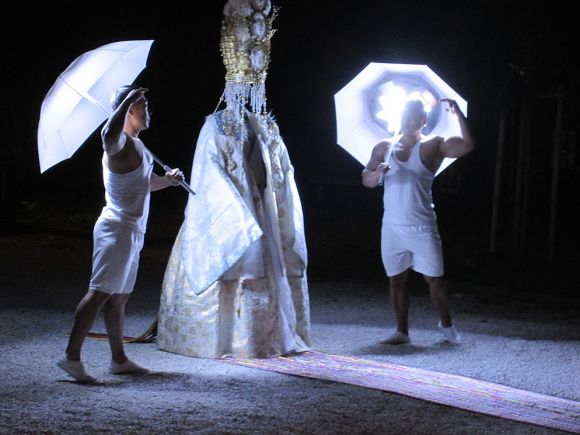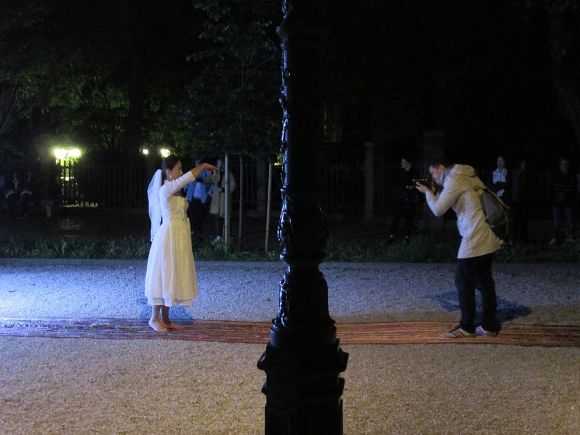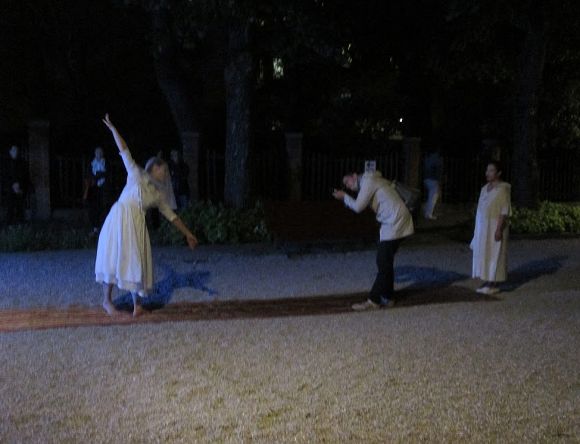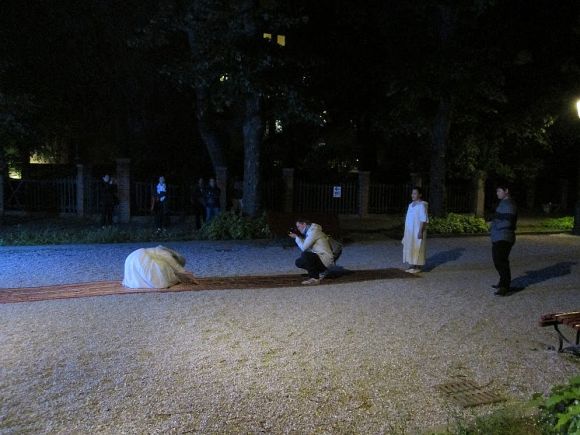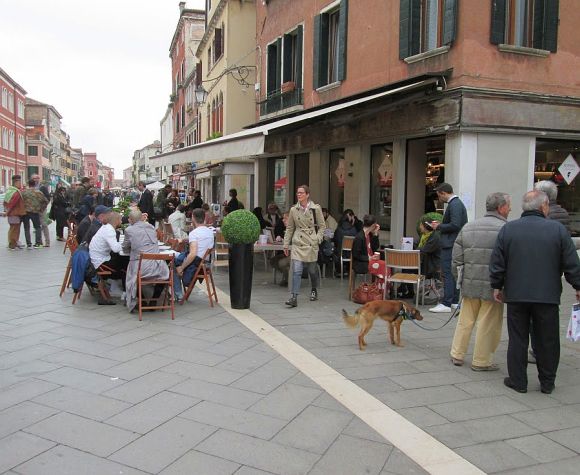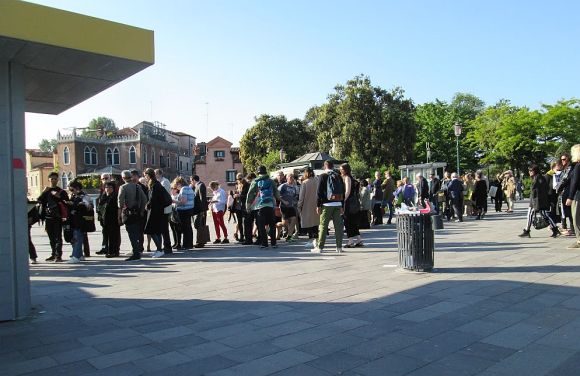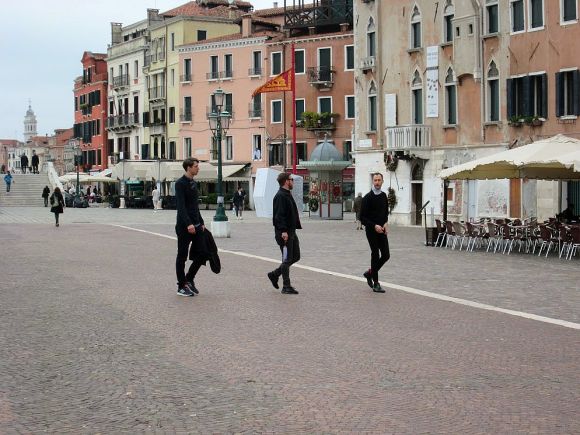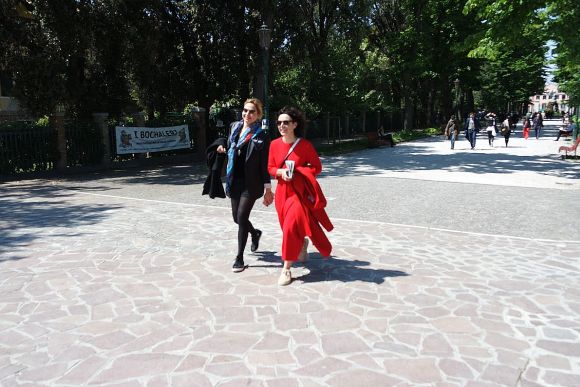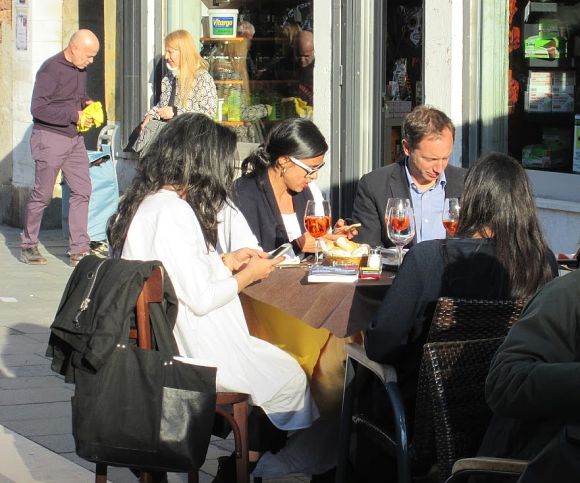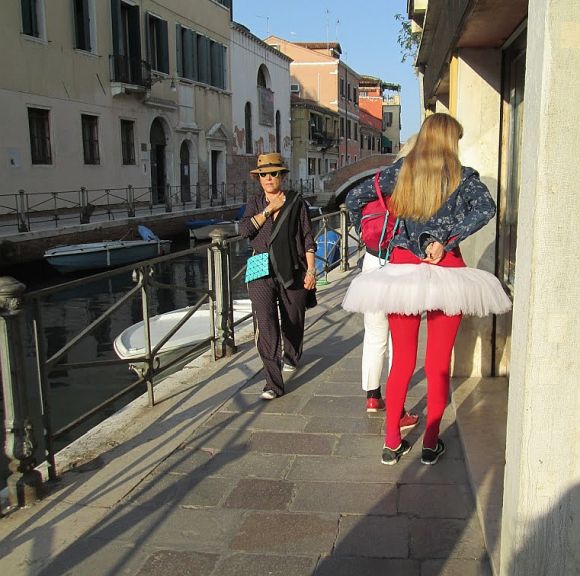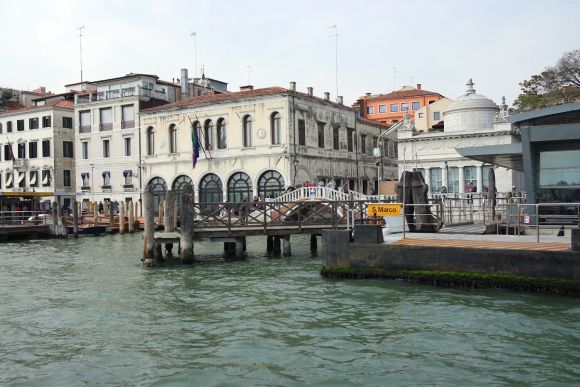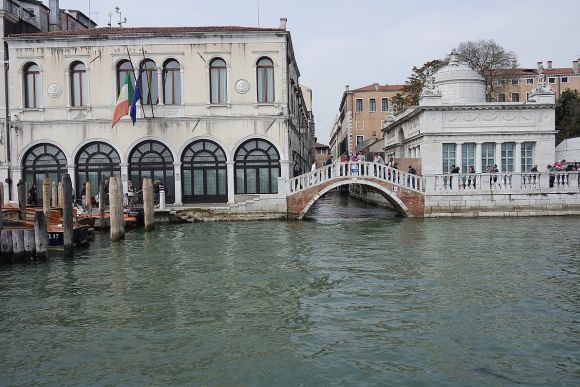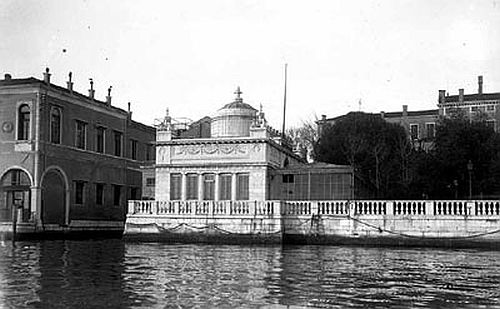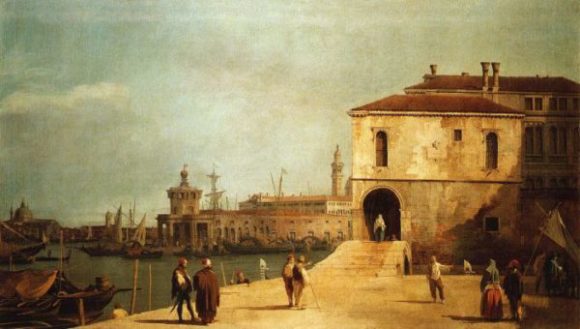It’s probably just me, always thinking of how much everything costs and wondering about how people deal with the price of Venice. Someone will remind me that Venice is priceless, but that’s only until the bill comes.
I used to think that to be a young person traveling around Europe in the summer meant sleeping on the beach and buying one banana (unit: each) for lunch and so forth. And as I look at the young people swarming the streets and clogging the vaporettos, it appears that the classic plan is still pretty much in operation.
But this morning I found myself wedged into the #1 going up the Grand Canal (does everyone really swell in the heat? And their luggage too?), next to two, or maybe it was three, young American girls. They had their big Patagonia duffel bags cinched onto their backs, which implied “backpacker with five euros to last till school starts.” But when I suggested to one of them to uncinch her bag and put it on the floor (so she wouldn’t be taking up space that two other people might occupy, which I didn’t say), we had an unexpected conversation.
Me: “So, are you enjoying Venice?”
She: “Oh yes, even though we just got in yesterday and we’re leaving this afternoon. We’re going to Porec (Croatia).”
“That’s nice, you’ll like it.”
“Last night we had dinner at the Marriott Hotel on that island, and today we’re having lunch at the Gritti Palace.”
Evidently their brief time in the world’s most beautiful city, etc. etc., was to be marked by comestibles and not by masterpieces by Titian. And they weren’t using half measures, either.
Here’s the dinner menu at the “Sagra” restaurant at the J.W. Marriott on the “Isola delle Rose.” This island is still referred to as Sacca Sessola by Venetians, and the buildings now boasting five-star everything were once occupied by people with tuberculosis and other respiratory diseases. “Island of the Roses” sounds so much nicer, and so much less Venetian.
But maybe they didn’t feed the inner backpacker at “Sagra.” Maybe they went to “Dopolavoro,” the hotel’s Michelin-starred restaurant. https://www.jwvenice.com/assets/uploads/PDF/menu%20dopolavoro%202017%20giugno%20con%20prezzi.pdf
I didn’t ask where they had slept. I’m assuming it wasn’t on the beach. With bananas.
Down along the Riva dei Sette Martiri, another vision from the rich-o-sphere briefly appeared. I’d like to say I’m hard to impress, having seen Barry Diller’s and Paul Allen’s yachts here, not to mention some of those Russian oligarchs who come here to oligarch. But this is certainly worth at least a second look.

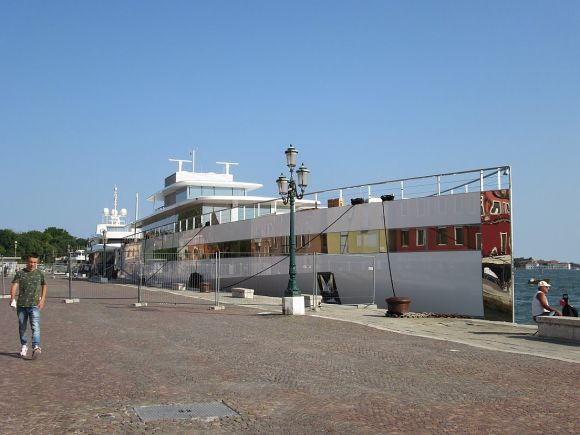
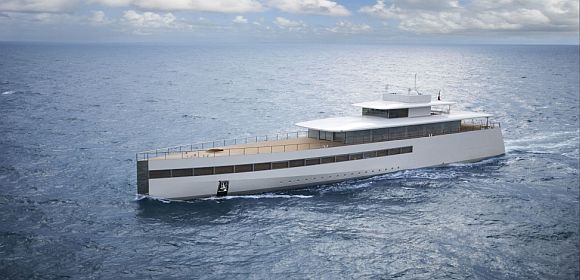
What some charter agencies seem unwilling to state is the identity of the rich person who commissioned it, though one agency says that it “is widely regarded to be Steve Jobs’ yacht.” I’m a stranger to these realms, but why would it be difficult to know this? The current owner is Laurene Powell, Steve Jobs’ widow, though that doesn’t prove anything. In any case, it’s too hot these days (up in the high 90’s) to begin to formulate a sermon, not even a small but perfectly formed preachment, but I will note that (A) it cost 100,000,000 euros ($118,145,000) and (B) Jobs died before it was completed. I don’t suppose anyone ever wondered where all that iMoney they spent on iThings ever went, but now you know that at least some of it is floating around out here.


